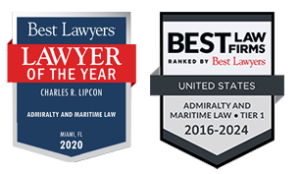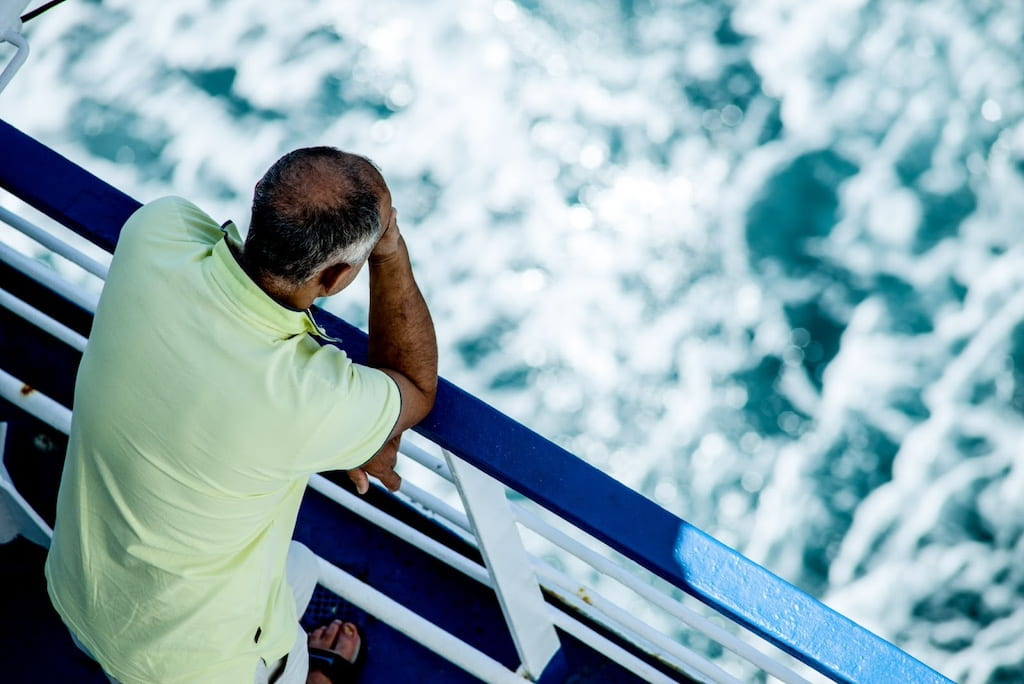Monday’s fire onboard Royal Caribbean’s Grandeur of the Seas has stirred up a lot of controversy in the cruise line industry regarding safety, accident prevention and evacuation protocols. So, in the spirit of education, what better day than the present to talk about all the possible cruise ship accidents that can take place and what passengers can do to keep themselves at the lowest risk for injury. After all, the best way to prevent an accident is to understand what causes it.
Let’s explore the different kinds of things that can go wrong on a cruise ship and what can be done to stay as safe as possible.
Collisions
Collisions are not uncommon in the cruise industry. These types of accidents occur when a ship crashes into another vessel or an object in the ocean or in port, such as a rock, dock, or in the infamous and tragic case of the Titanic, an ice berg. These days, the chance that a huge chunk of ice will cause a ship to sink is rare, as cruise lines have implemented new technology to detect and avoid icebergs. However, there are times in which collisions can occur, similar to last year’s accident involving the Norwegian Star and Royal Caribbean’s Explorer of the Seas, in which the Star collided with the Explorer of the Seas in September, 2012, after strong winds caused the Star to break from its mooring and crash into the Explorer of the Seas.
However, collisions can also occur because of the negligence and wrongdoing of the vessels Captain and/or crew. Such an incident took place in Hong Kong in October, 2012, when a ferry called the Sea Smooth crashed into a party boat called the Lamma IV, killing 39 people – 8 of which were children. The captain of the Sea Smooth tried to cross in front of the Lamma IV, this led to a head-on collision between the two vessels. This is a prime example of how negligence, speeding and a disregard for safety can cause a maritime collision.
Groundings
Ship groundings actually take place more frequently than cruise passengers might imagine. When a vessel “runs aground” this means that a vessel has come into contact with the seabed, the result of which may include damage to the part of the vessel’s hull that is submerged. Often caused by negligence, these accidents can be very dangerous because if the damage to a ship’s hull includes a tear or gash, water may enter the vessel through the opening and lead it to sink.
There are reports of cruise ships and cargo vessels grounding nearly every week, but they don’t always result in serious injuries and are not as publicized as are major maritime disasters. However, there is one tragic cruise ship grounding that will never be forgotten: The Costa Concordia.
January 13, 2012 will forever be remembered as the day the Costa Concordia ran aground off the coast of Giglio, an island in Italy. The accident was the direct result of the vessel’s former captain Francesco Schettino’s last minute decision to perform a maneuver called a “salute,” which brought the ship too close to shore, where it struck a giant rock, ran aground and partially sank. A total of 32 lives were lost because of Schettino’s tragic mistake and the cruise line’s inability to prevent an unplanned, unapproved last minute change to the ship’s itinerary.
Schettino now faces prosecution for manslaughter and abandoning ship.
Fires
Fires are becoming more frequent in the cruise line industry and are usually the result of equipment malfunctions or neglect of safety protocols by either the crew or sometimes passengers. Although they don’t occur that often, when they do, they are sudden and usually extensive enough to result in the ending of the voyage. Many people – both passengers and crew members – have been injured or killed by fires onboard vessels. Fortunately the one which took place just two days ago on Memorial Day Monday resulted in no fatalities or injuries. Royal Caribbean’s Grandeur of the Seas experienced a fire.
In February, the Carnival Triumph experienced a cruise fire which knocked out the vessel’s power and left over 3,500 people in deplorable sanitary conditions for days.
So what is the best way to reduce the likelihood of an injury on a cruise ship? Abide all safety precautions. Attend all safety drills, always be aware of where the life jackets are at in case an emergency is declared, keep loved ones close by at all times or bring walkie talkies to communicate onboard the ship, and pack your own first aid kit.
Our firm released a new app for smart phones called “Cruise Ship Lawyer” which is also helpful. The app features a section where passengers can take notes of what happened in the incident, take pictures, and keep medical bills in order. It also has a built in flashlight to help avoid slips and falls if the power on a ship goes out, and even has a Skype feature that allows cell phone users to contact our firm in case of an emergency.
While cruise lines, especially Carnival, have noted the need to improve safety fleet-wide, it will be months – or even years – before we actually see these improvements in place. In the meantime, it’s important that cruise passengers know that accidents can – and do – happen so if you or a loved one are planning on enjoying a cruise vacation anytime soon, keep your eyes open for any sign of danger, never leave children alone, remember where your emergency muster station is located, and try your best not to panic. Often, the worst incidents are magnified because passengers panic while trying to evacuate.
Published on May 29, 2013
Categories: Cruise Ship Accidents
Get Free
Consultation









